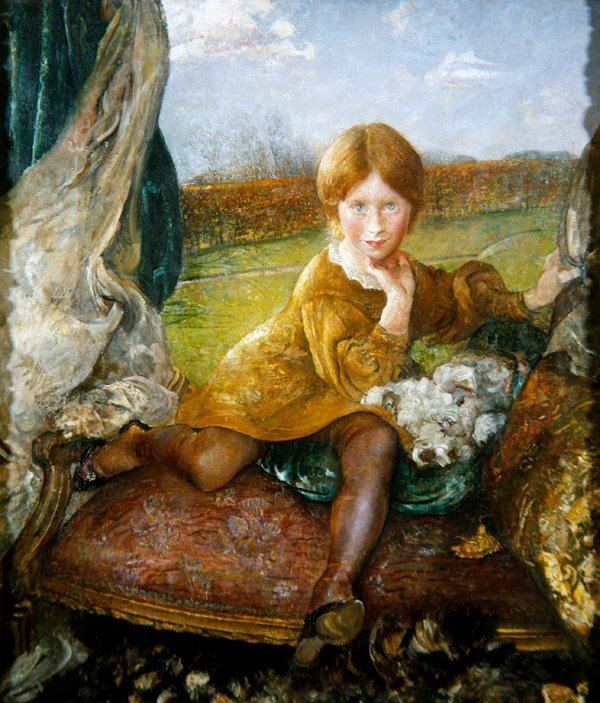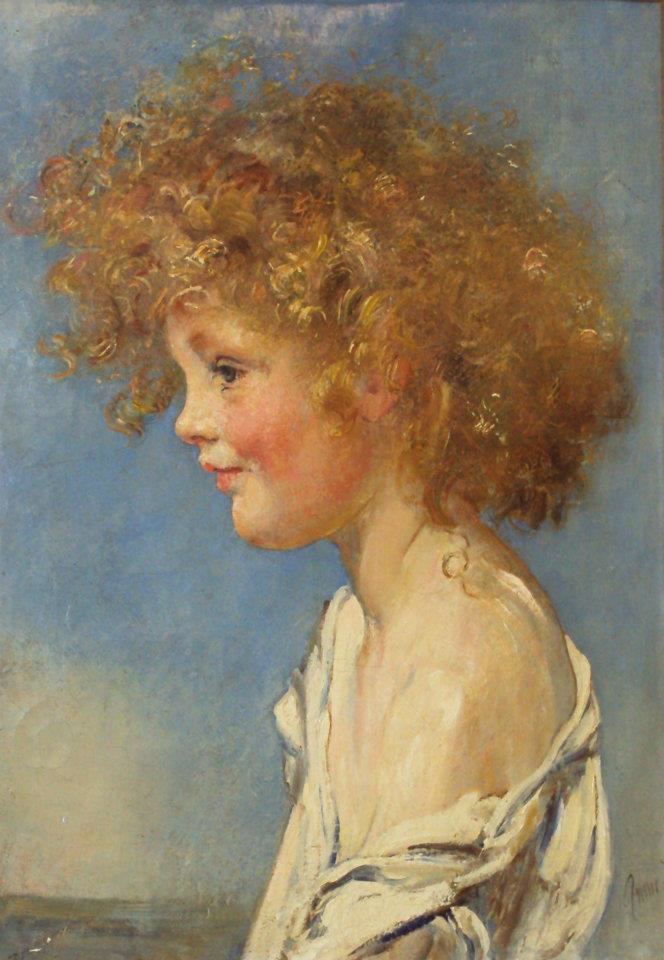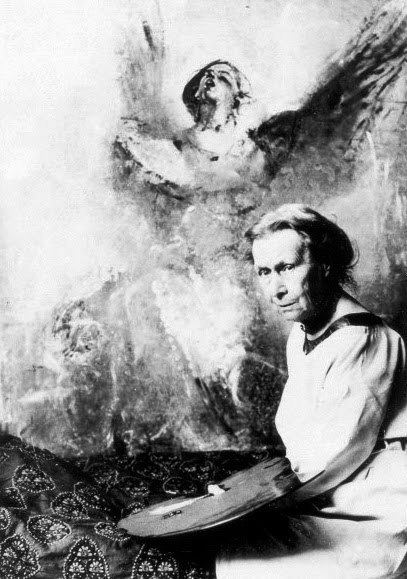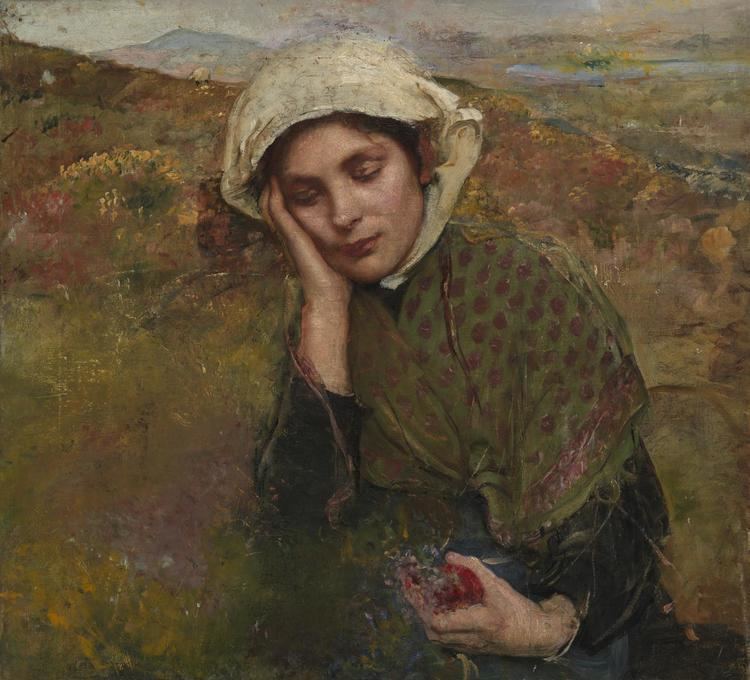Nationality English Spouse(s) Joseph Swynnerton | Name Annie Swynnerton | |
 | ||
Full Name Annie Louisa Robinson Artwork The Sense of Sight, New Risen Hope, The Young Mother People also search for James of Portugal, Carlo Collodi | ||
Annie swynnerton serenata para cuerda en do mayor kv315
Annie Louisa Robinson Swynnerton (1844–1933) was an English painter of allegorical, figure and portrait paintings. She studied at Manchester School of Art, Académie Julian, and in Rome. Swynnerton was influenced by George Frederic Watts and Edward Burne-Jones. John Singer Sargent appreciated her work and helped her to become the first elected woman member at the Royal Academy of Arts in 1922. Swynnerton painted portraits of Henry James and Millicent Fawcett. Her works are in collections in the England, Scotland, and abroad. She was married to sculptor Joseph Swynnerton. They lived together in Rome. Swynnerton was a feminist and suffragette. Her middle name is sometimes spelled Louise and her surname is also spelled Swinnerton.
Contents
- Annie swynnerton serenata para cuerda en do mayor kv315
- Inspiring female artists annie swynnerton
- Early life
- Education
- Style
- Career
- Feminist
- Personal life
- References

Inspiring female artists annie swynnerton
Early life

Annie Louisa Robinson was born on 26 February 1844 in Hulme, Manchester. Her parents were Francis Robinson, a solicitor, and Ann Sanderson. Swynnerton had six sisters. She made and sold watercolor paintings to supplement the family's income during a difficult financial period. Emily, her sister, was also an artist.
Education

Swynnerton trained at the Manchester School of Art, beginning in 1871. She won a gold prize and a scholarship for an oil and watercolour painting. From 1874 to 1876, she took art lessons in Rome along with her friend and fellow artist, Susan Isabel Dacre, who was also from the Greater Manchester area. The women then studied at the Académie Julian in Paris from 1877 to 1880. Swynnerton was influenced by the works of Jules Bastien-Lepage. She lived in Manchester in 1880 and by 1882 was living in London.
Style

Swynnerton painted portraits, figures and allegorical scenes. George Frederic Watts and Edward Burne-Jones were supporters of her career. According to Linda Murray, "She was much influenced by Watts, and many of her subjects were of the allegorical or symbolic type which was his forte. Her drawing was solid, and she had a sculptural grasp of form allied to fresh, broken colour displaying affinities with Impressionism." An example of one of her allegorical works is The Sense of Sight, which depicts an earth-visiting angel who finds and connects to heaven using her vision. The catalogue for the Tate exhibition "Exposed. The Victorian Nude" states that "Rome based Annie Swynnerton was one of the most daring female painters of the nude, often shocking audiences with her robustly painted figures".
Swynnerton's works incorporated aspects of Neoclassicism, Pre-Raphaelitism and Impressionism. The Magazine of Art described one of her works, "[A] highly imaginative design by [Wynnerton] is Mater Triumphalis. The limbs of the figure are somewhat heavy in outline, whilst there is a certain metallic appearance in the colouring that is quite apart from the idea of the flowing life-blood in a human body." She was also adept at painting children.
Career
Dacre and Swynnerton shared a studio. In 1879, the two women founded the Manchester Society of Women Painters, which offered art education and exhibitions. Emily Robinson was also a member. Swynnerton painted Dacre's portrait, which was exhibited in 1880 at the Royal Academy of Arts. It was then given to the Manchester Art Gallery. She was the second woman to sit on the Liverpool Autumn Exhibition hanging committee in 1895.
Swynnerton painted portraits of members of the Garrett family, including Agnes (1885); Louisa, a member of the Manchester National Society for Women's Suffrage; Millicent Garrett Fawcett, which was purchased by the Chantrey Bequest for the nation and is at the Tate Gallery; and Louisa Garrett Anderson. She painted portraits of people close to the Garretts, including Henry James and Rev. William Gaskell, husband of novelist Elizabeth Gaskell. Ethel Smyth was a patron to Swynnerton. John Singer Sargent made a painting of Swynnerton and Smyth's sister, Mrs. Charles Hunter.
With an initial introduction by Burne-Jones, Swynnerton exhibited at the Royal Academy of Arts from 1879 to 1886 and then 1902 to 1934. John Singer Sargent appreciated and purchased her work. He gave the nation The Oreads made by Swynnerton. He was instrumental in her election in 1922 to become the first female associate of the Royal Academy since the 18th century and the first woman to be elected into the organization. Swynnerton's work was also exhibited at other English, Scottish, and international exhibitions. In 1893, Florence Nightingale at Scutari was shown at Women's Exhibition at the Chicago World's Exposition. According to Hellary Fraser, author of Women Writing Art History in the Nineteenth Century, the work showed the manner with which women artists could convey tender feeling with strong artistic composition and colour.
Feminist
She was an active feminist and suffragette, by 1889 when she signed the National Union of Women's Suffrage Societies' Declaration in Favour of Women's Suffrage.
Dacre and Swynnerton, part of a feminist community in Manchester, believed that the bonding as women steeled them against societal and traditional roles for woman.
Personal life
She met sculptor Joseph William Swynnerton, from the Isle of Man, when she had been in Rome. They married in 1883 and lived primarily in Rome and had a studio in Sheppard's Bush in London. The Swynnertons were married until 1910, when he died.
Swynnerton's eyesight deteriorated in her later years. Following her husband's death, she lived in Chelsea, London and Rome, before finally settling on Hayling Island, England. She died there in 1933. In her will, and in memory of Susan Isabel Dacre, she left a bequest to Francis Dodd, an artist.
Swynnerton was described as follows:
She was a talented artist and an accomplished woman, though scarcely one of whom it could be said she possessed a charm of matter. Indeed, by maintaining the courage of her convictions she was at times embarrassingly outspoken. She had a slight stutter.
